
Limestone or Porcelain?
Short guide to understand the difference
Nowadays tile industry offers a variety of options for your flooring like natural limestone and limestone effect porcelain tiles. Here you’ll discover a comprehensive guide explaining some key differences between limestone and porcelain.
From the perspective of the actual material limestone is a natural stone quarried from the earth, and more specific it is a sedimentary rock, that can be formed over a long time.
Porcelain tiles are a man-made product that has kaolin clay, finely ground sand and feldspar combined. This mixture is fired at more than 1200 degrees Celsius resulting in a very dense material.
The aesthetic value between these materials can be very subjective. The appearance of the tile in the eye of the perceiver is defined by the main characteristics for each of them and in the end brings in the decisive element.

Westminster slab (Heritage Collection)
The whole beauty of limestone is created by the fact that your flooring it is going to be unique, based on the fact that most natural stones have a degree of variation for their colour, also is good to take into account the presence of calcite veining, fossils fissures, vents and crystallization. Following these specific aspects please do take them into consideration when designing your project.
Limestone can have different finishes applied like textured, tumbled and worn edges, matt or high polished surface. Is worth knowing that the tile tone could be slightly altered after such finishes. For external paving slabs the colour will get darker when these will be wet.
Limestone while often cheaper initially, can lead to higher maintenance costs over the years.
Porcelain despite a potentially higher upfront cost, usually ends up being more economical due to its durability and minimal maintenance. It has been produced to mimic the natural look of the stone and wood. Some porcelain ranges have high variation in appearance from 9 to 35 different faces (print repeat). Other ranges can be more plain and uniform in colour tone. We try to illustrate print repeats on every single listing. Technological progress allows very high quality prints, a replica to the look of the natural material like veining, fossils structure, worn out effect, tumbled or chipped edge
Pietre Lime Beige matt porcelain 60x90cm
Let’s have a look at the tile sizes and formats
From a general perspective natural stone is often a free length (FL) or random length tile size. Free lengths have a fixed width (normally 400mm, 500mm or 600mm) and the lengths varying from 500mm to 100mm. This format is laid as random brick bond with staggered joints which will create a very versatile and natural feel. Also there can be bespoke pieces like bull-nose steps, pull copings and skirting boards available for certain products.
Porcelain tiles are available in fixed sizes and diverse formats. 900x600mm is a common size for porcelain flooring specific for the spaces like kitchen, dinning or living room area. This size can be laid as a staggered brick bond or straight stacked bond depending on the customer’s design. Small format tiles such as square, metro, hexagon, brick are popular for bathroom spaces. The contemporary trend is to have brick format tiles laid staggered or herringbone pattern.

Cotto Mix matt porcelain 62x235x9mm
Larger sizes like 1200x600mm, 900x600mm, 800x800 or even 1000mm will create a big visual impact and only with a few grout lines.

Folkestone Beige 90x90cm
Chateau Champagne is a mix of different sizes 30x30mm, 50x50mm, 30x50mm in a opus pattern will add a special character and identity to your floor.
Chateaux Champagne
What about installation and maintenance?
We need to start with the statement that both natural stone and porcelain tiles are suitable for underfloor heating. Upon installation natural stone requires sealing and will likely need resealing every 4-6 years. Being a very porous material will need protection against water, oil and grease. Most porcelain tiles do not need sealing and have a very low water absorption rate. It is very important to use leveling wedges when installing porcelain tiles for best results as during firing process the tiles undergo a slight bowing.
Porcelain and natural stone are beautiful option for your flooring. For stone it is essential to only use stone friendly or pH neutral cleaners as any acid solution can damage the surface and our recommendation is Lithofin wash and clean. For porcelain the majority of cleaners are suitable to use.
Both of these tiles offer a durable and practical solution for the flooring. Please note that natural stone is prone to scratches over time and exterior slabs can lighten in colour, but this fact is not considered as a concern is more like a feature of authenticity.
For something more consistent and permanent in colour go for porcelain which is scratch resistant, UV stable and perfect for outdoors.
We hope that you’ll find this short guide helpful. For more ideas regarding floor tiles please have a look through our ranges!

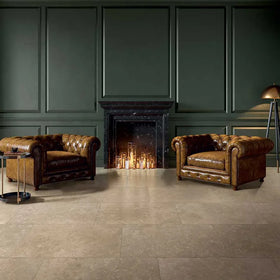



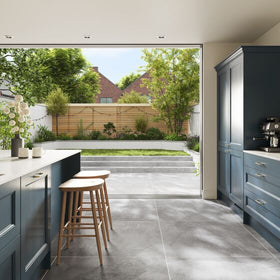









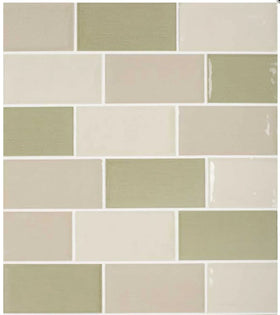

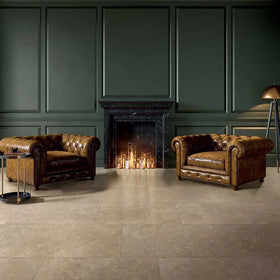

















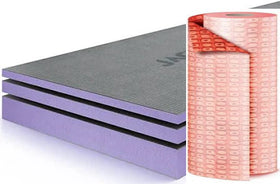




Leave a comment